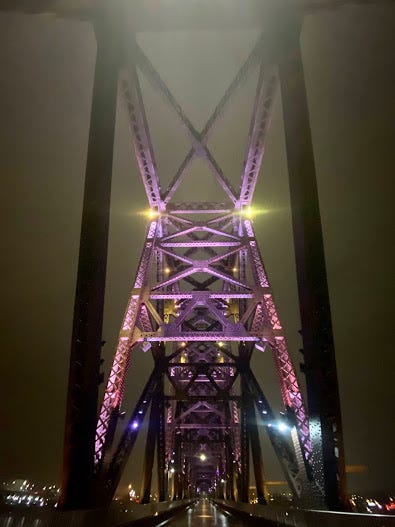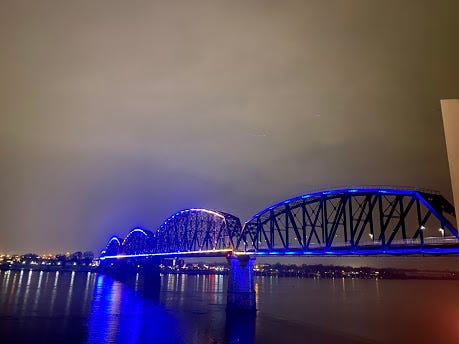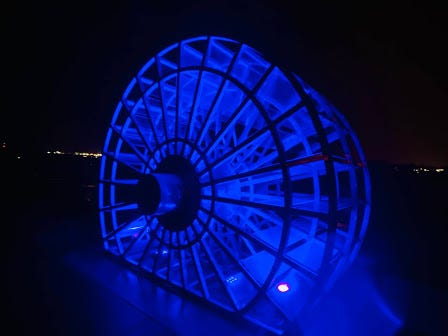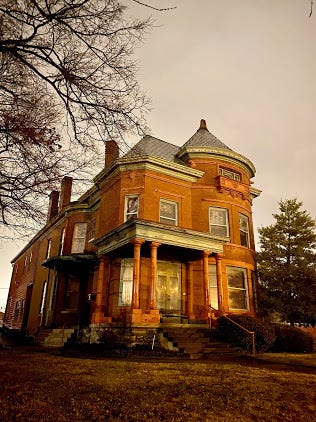On the road: Louisville, Kentucky
Big Four Bridge, Louisville, Kentucky
A breathtaking mix of engineering, art, history, and functionality, Big Four Bridge doesn’t just link two cities across a river, it links the present to the past.
Louisville has always held a spot on my bucket list of places to visit in the US. I desperately wanted to visit the city as a child just to see where America’s favorite baseball bats were produced. My urgent desire to visit Louisville faded as I ventured into adulthood, too busy to worry about baseball bats or their origins, but the city still lingered in the back of my mind as a place I would like to see as convenience allowed.
I was excited by the opportunity to visit Louisville recently, although I chose not to partake in any tours or museums due to the pandemic. My first stop was at Louisville Cream to pick up a scoop of cinnamon ice cream, which did not disappoint. Next, I headed over to Waterfront Park to check out Big Four Bridge.
Big Four Bridge is absolutely spectacular- this impressive feat of engineering spans across the Ohio River, linking Louisville, Kentucky, and Jeffersonville, Indiana. Named after the railroad companies that used it (nicknamed the Big Four), the 2,525-foot long through- truss bridge was completed in 1895. Due to concerns about increasing weight load, it was updated in 1929. The new and improved Big Four continued to transport passengers and goods via railroad until 1968. In 1974, the approaches to the bridge were demolished and the bridge was completely abandoned. Instead of demolishing the remains, the cities of Louisville and Jeffersonville converted it to a pedestrian bridge. The $22 million renovation was completed in 2014, giving new life to Big Four.

Big Four experienced quite the string of bad luck in its early years. Thirty-seven workers perished during its construction, which was plagued with multiple accidents including flooding, collapsed beams, and a windstorm that blew a truss with 41 workers atop into the river. The bridge later experienced nearly colliding trains and a few decades of disuse after its approaches were demolished. The bridge experienced multiple electrical fires after being used to display Christmas lights during its inactive years. At its lowest point, it earned the nickname “The Bridge That Goes Nowhere” until the cities of Jeffersonville and Louisville, with help from the state of Kentucky, funded the conversion to a pedestrian bridge. In 2013, the Kentucky side of the bridge was opened to pedestrian use and in 2014, the Indiana approach was completed.
Once again a functional bridge, Big Four is now the highlight of Waterfront Park. The bridge is adorned with over $2 million in LED lights and puts on a colorful light show driven by computerized controls. At the center point of the bridge, music from the late 1800 plays through speakers mounted on the bridge’s framework, creating a nostalgic mood. Signage highlights history of the bridge and surrounding area. Upon reaching the Indiana side, one may continue to the Jeffersonville Tree Walk to view 70 species of trees native to the area. The Tree Walk also features local art and passes through a historic neighborhood with Victorian-style homes and trendy eateries. After many years of misfortune, Big Four is now a magical place for all to enjoy.



Visiting Big Four Bridge
Big Four Bridge is open 24 hours a day for pedestrian and bicycle use, but the light show ends at 1:00 AM. The bridge is wheelchair and stroller accessible. Parking is available on both sides of the bridge, with a parking lot on the Kentucky side and street parking on the Indiana side. Pets are not allowed on the bridge. The bridge and park is free; donation boxes are located at the ends of the bridge for those who wish to support the park.
Leslie Driskill is a travel enthusiast from Oklahoma. When she isn’t on the road, you can find her hiking, writing, or with her head buried in a book. You can follow her on Tumblr for daily motivational quotes and travel photos!

